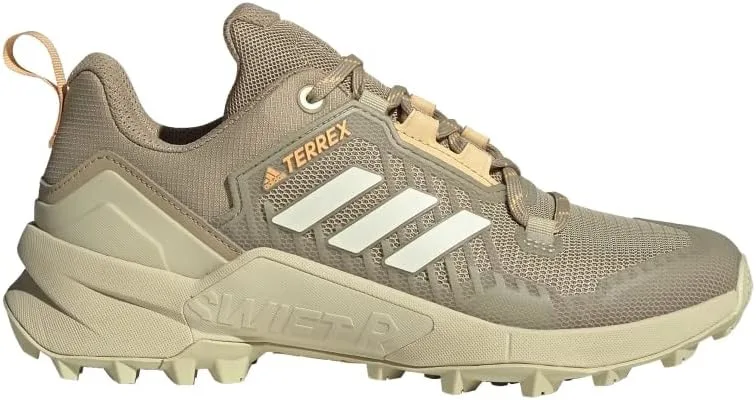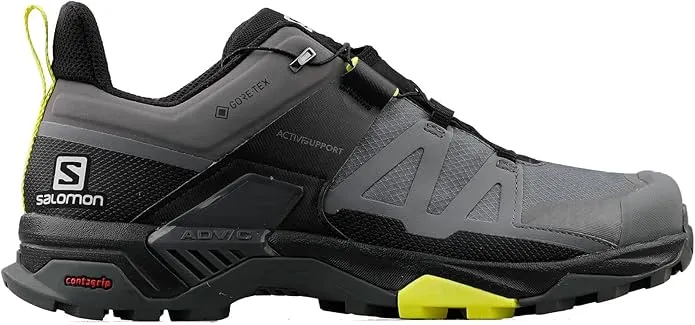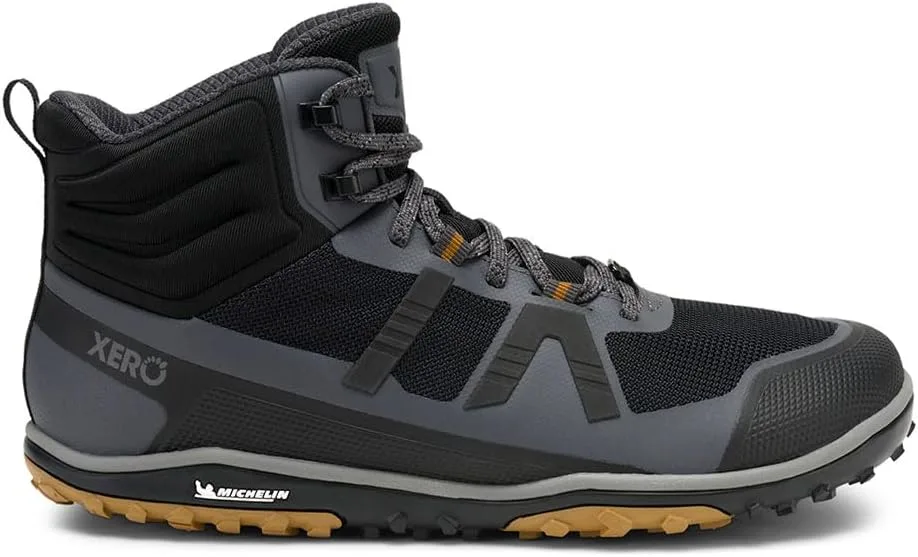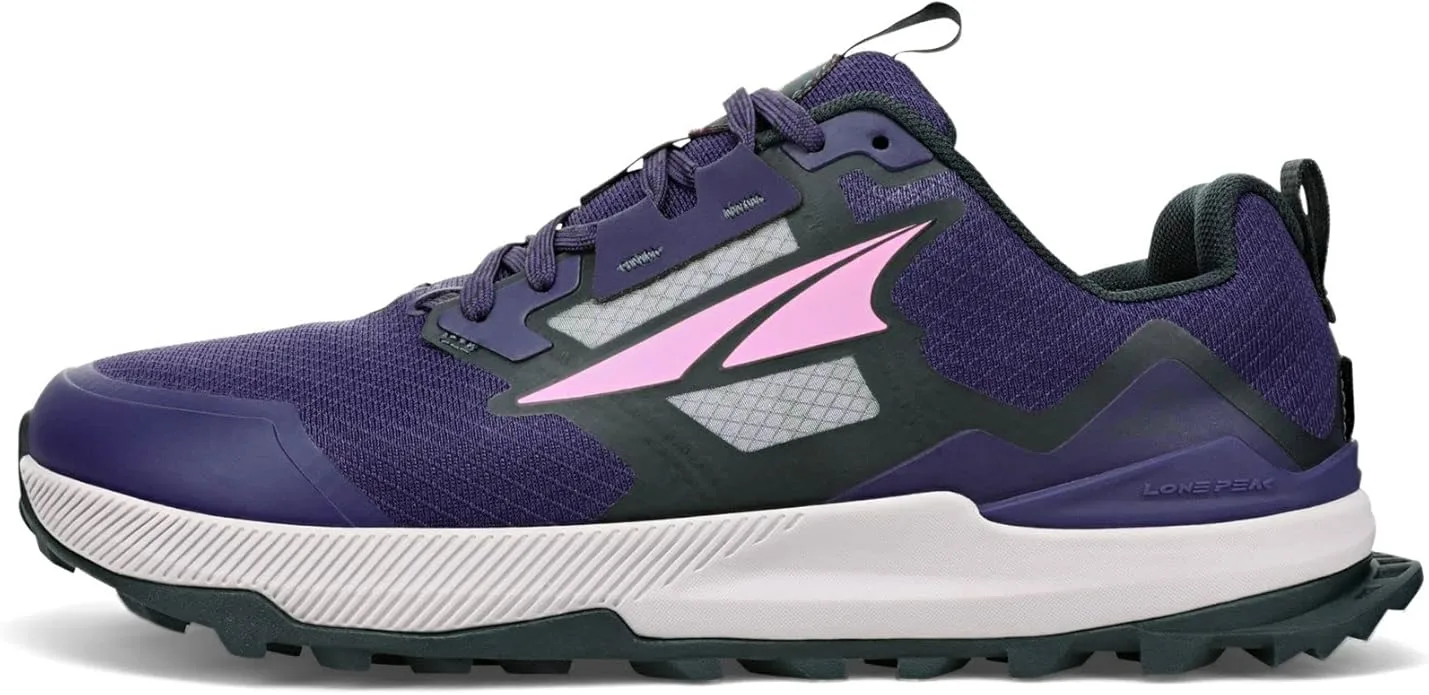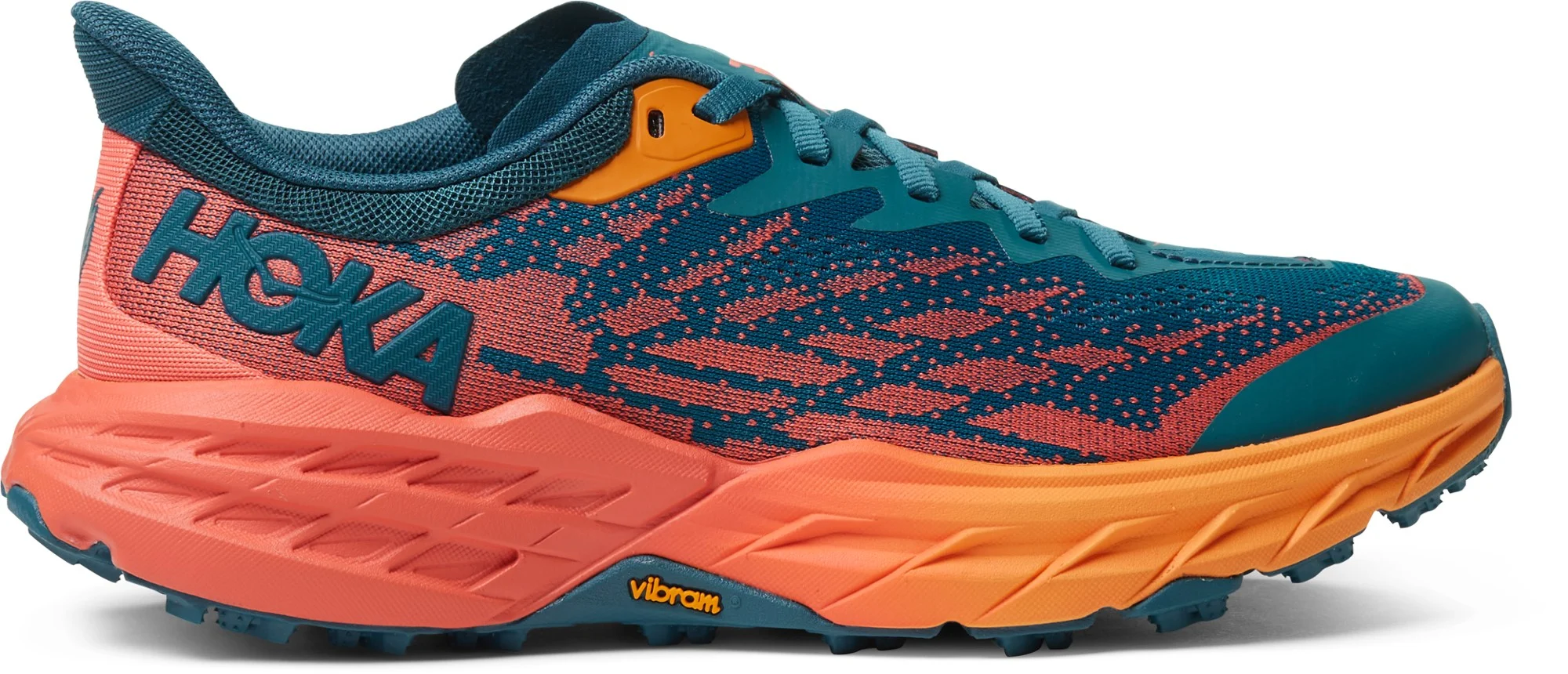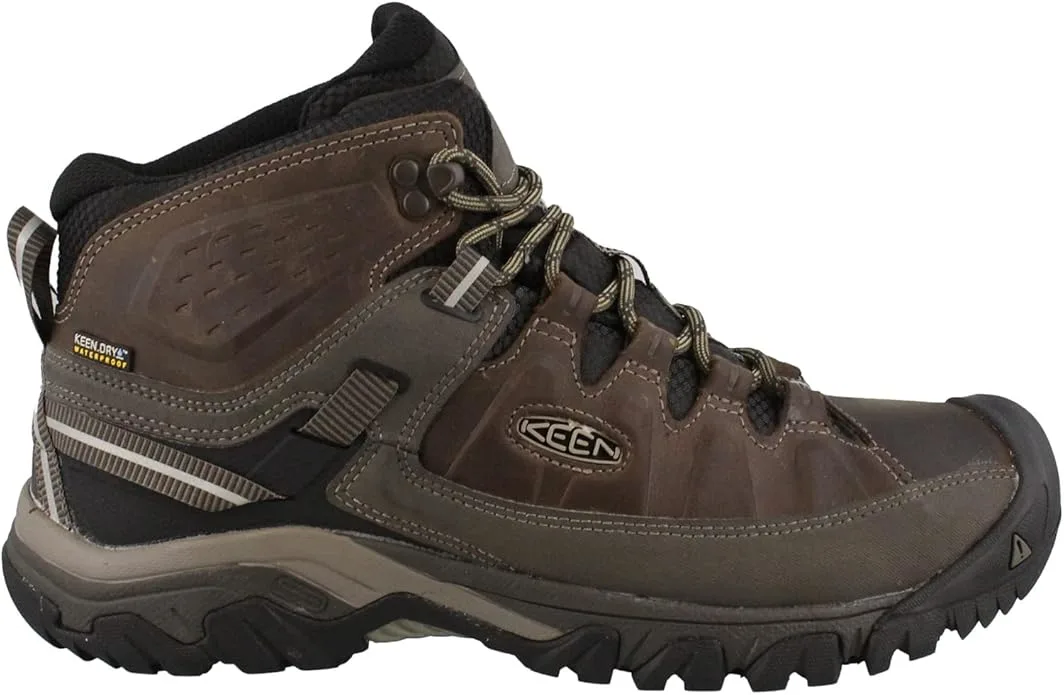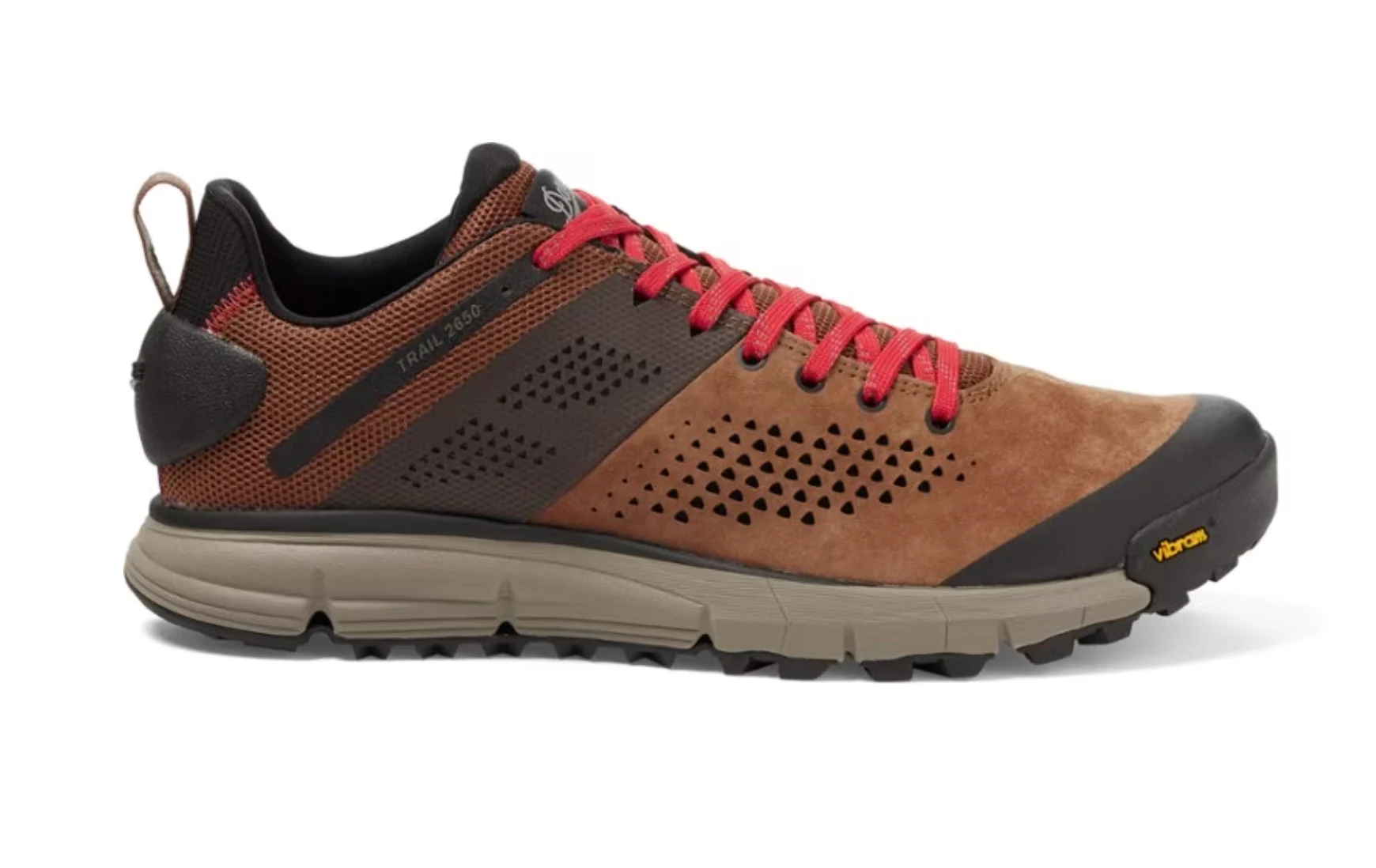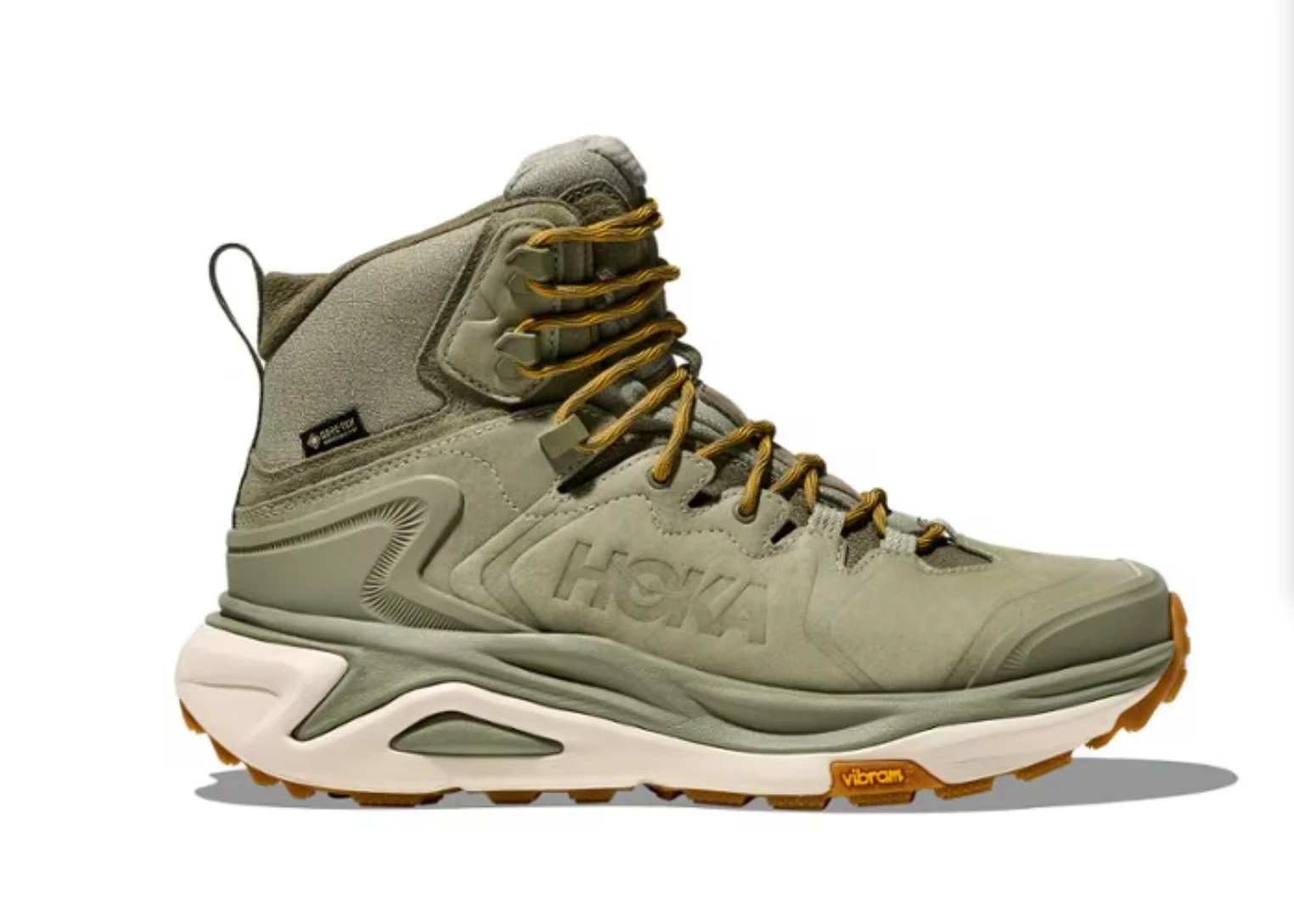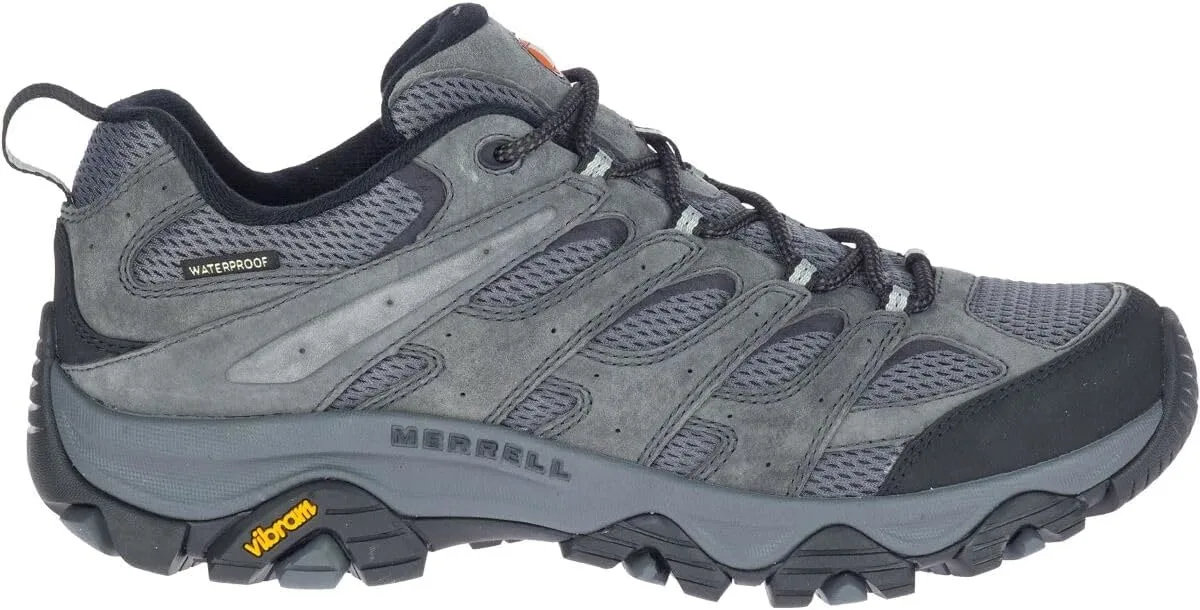We may earn revenue from the products available on this page and participate in affiliate programs. Learn more ›
Whether you’re heading deep into the backcountry or simply enjoying a few hours on your local trail, finding a good pair of lightweight hiking shoes is a critical decision. The right footwear lays the foundation (literally!) for a good time outdoors.
There’s nothing we love more than time on the trail. And there’s nothing worse than having uncomfortable shoes ruin that time. Hiking boots certainly have their place and trail running shoes have a lot to offer, but lightweight hiking shoes may just reign supreme. They offer up the right balance of traction and comfort—and often don’t need as long of a break-in period. After spending countless hours outdoors and putting these shoes to the test, we’ve found the best lightweight hiking shoes for you.
Best Overall: Salomon X Ultra 4
Best Waterproof: Adidas Terrex Swift R3 GTX
Best Minimalist: Xero Shows Scrambler Mid
Best Men’s: Altra Lone Peak 7
Best Women’s: Hoka Speedgoat 5
Best for Wide Feet: Keen Targhee III
Best for Travel: Danner Trail 2650
Best Ankle Support: Hoka Kaha 2 GTX
Best Budget: Merrell Moab 3
How We Picked the Best Lightweight Hiking Shoes
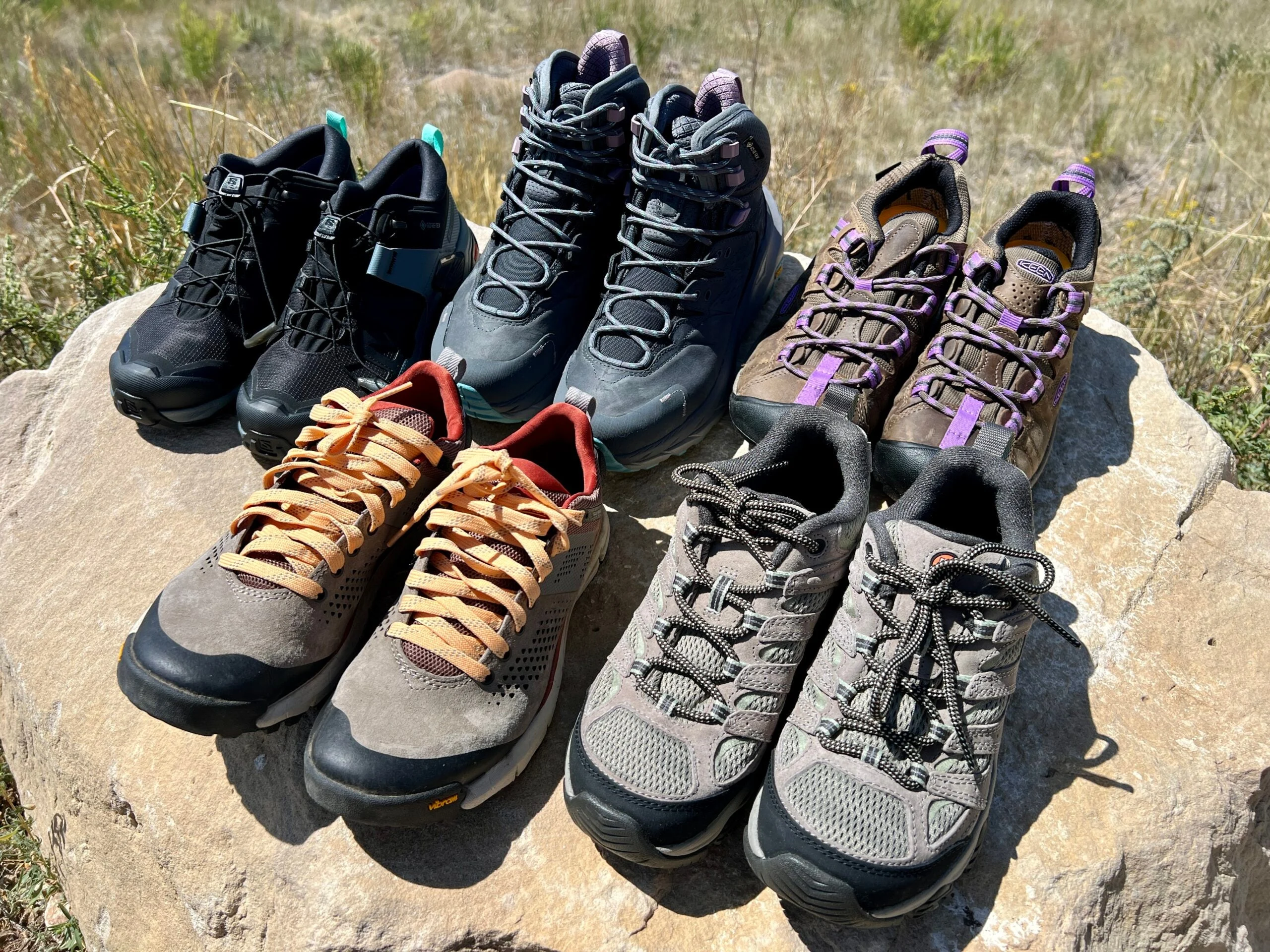
We’ve spent thousands of hours on trails around the world including long treks in the Colorado backcountry, a few weeks in the Pacific Northwest, and several seaside jaunts off the coast of Maine. Our testers pay particular attention to comfort, traction, and durability, along with style and value. All in all, we aim to put these shoes through the paces in a variety of settings so that we can properly test in muddy, dry, rainy, rocky, dusty, and any other wild climates you may experience.
Best Lightweight Hiking Shoes: Reviews and Recommendations
Best Overall: Salomon X Ultra 4
Specs
Weight: 340 grams (for men’s size 8.5)
Materials: Synthetic and mesh
Waterproofing: Gore-Tex membrane
Pros
Lightweight design ideal for long-distance hikes
Exceptional breathability keeps your feet cool and dry during hot summer hikes
Excellent grip with the Vibram Megagrip outsole ensuring secure footing on various terrains
Cons
Run small, so size accordingly or try them on before purchasing
Not as waterproof as some other hiking shoes
This lightweight hiking shoe has nailed the game with its blend of comfort, stability, protection, and traction. For stability, the Salomon X Ultra 4 stands out with its advanced chassis system (ADV/C), offering robust lateral stability and an Active Support Strap to secure your foot firmly in place. These features work together to ensure that your foot stays in place, even on challenging terrain.
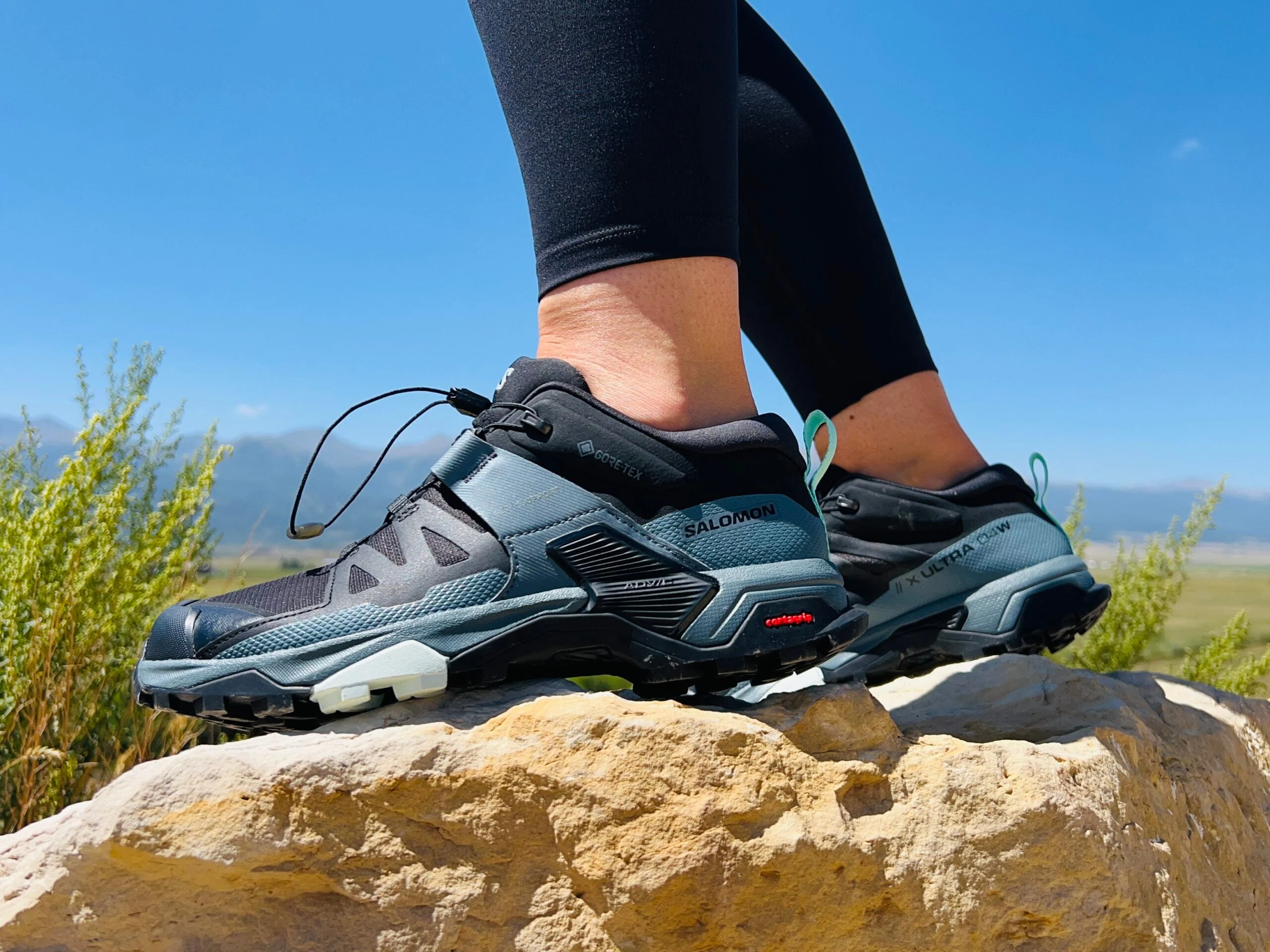
Protection is another key aspect, as the shoe offers a beefy rubber toe cap that guards your toes against those unexpected bumps along the trail. Although the uppers are made from mesh for ventilation, our testers found these still offered top-level protection.
In terms of traction, the Salomon shoe is equipped with the proprietary ContiGrip compound that performs well on a wide range of surfaces. The chevron lugs on the outsole are designed for maximum grip and stability on both ascents and descents. We experienced a bit of slippage on wet rock, but otherwise the traction performed very well.
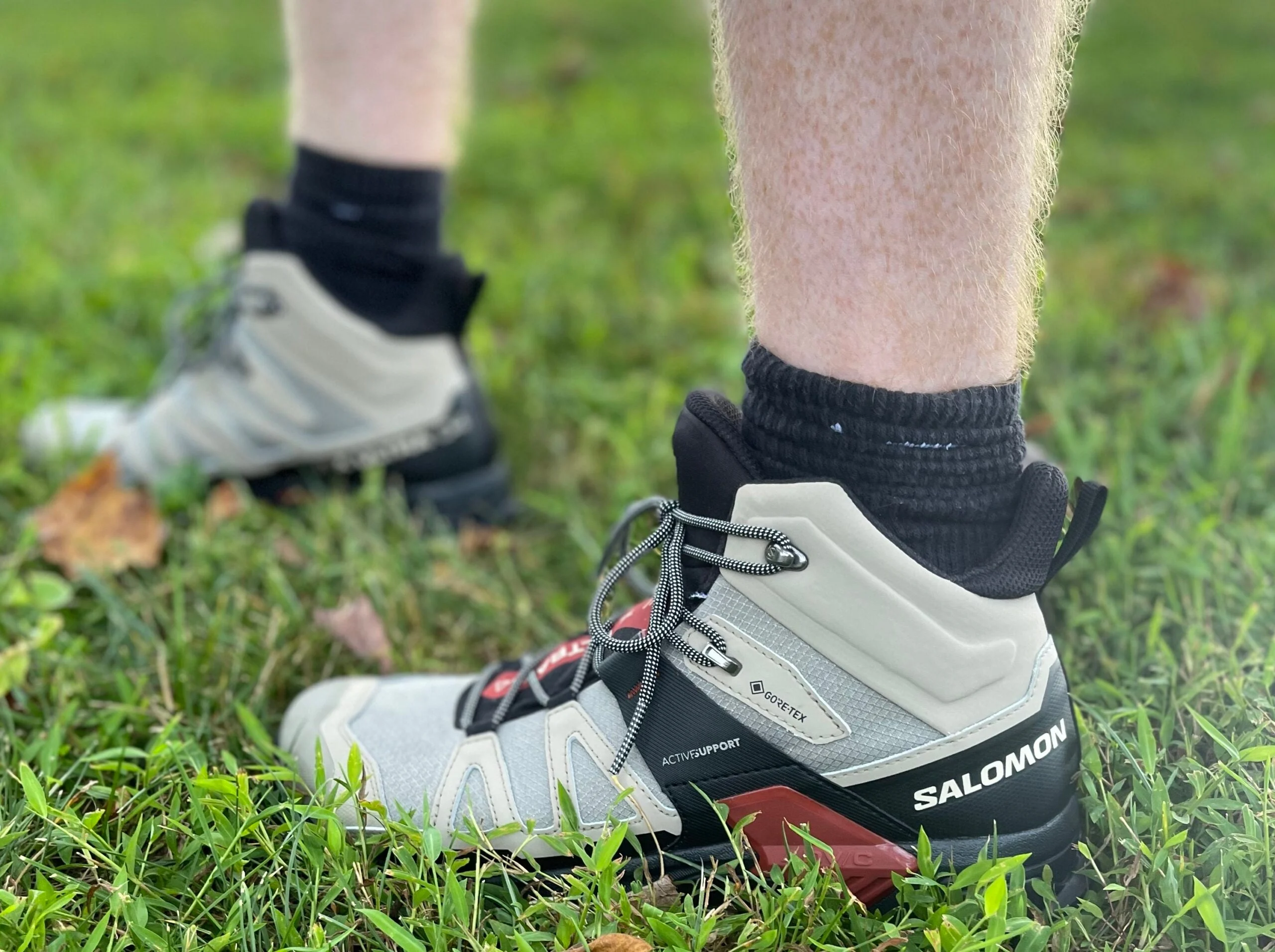
Lastly, let’s talk about comfort and weight. At just 420 grams, the shoe is surprisingly lightweight. However, the minimalist cushioning might not be the most comfortable for hikers who prefer something a bit more plush. All in all, the Salomon X Ultra 4 excelled in a variety of settings and provided all day comfort, traction, and stability during our tests.
Best Waterproof: Adidas Terrex Swift R3 GTX
Specs
Weight: 415 grams (for men’s size 9)
Materials: Ripstop mesh and synthetic overlays, continental rubber, and EVA
Waterproofing: Gore-Tex waterproof and breathable membrane
Pros
Very waterproof and breathable, making it suitable for hiking in wet and muddy conditions
Superior grip on wet and slippery surfaces
Cons
Some testers found them to be stiff out of the box and may require a break-in period.
Do you find yourself hiking in wet conditions? Do you hate the feeling of wet feet? Then you may want to consider a waterproof hiking shoe. The Adidas Terrex Swift R3 GTX is a highly versatile hiking shoe that offers excellent performance and comfort. The shoe’s upper is made of a combination of synthetic and mesh materials, providing plenty of breathability and support, while the Gore-Tex membrane offers waterproofing that kept our feet dry no matter what.
We found the shoe’s toe cap and heel counter offered plenty of protection against rocks and other obstacles on the trail. The continental rubber outsole with Traxion lugs provided impressive grip, so we had traction on even the most wet and slippery surfaces. The shoe’s EVA midsole gave us ample cushioning and shock absorption, while the molded TPU toe cap and external heel counter provided additional protection and support on the trail.
The overall design of the shoe promotes a natural stride and foot positioning, making it a great choice for hikers who want a shoe that can handle various terrains and conditions.
Best Minimalist: Xero Shoes Scrambler Mid
Specs
Weight: 328.9 grams (for men’s size 9)
Materials: Ripstop nylon and ultra-tough Michelin souls with 5,000-mile guarantee
Waterproofing: Zero-Tex waterproof membrane
Pros
Extremely Lightweight
Exceptional grip on wet and slippery surfaces
Ultra-wide toe box
Cons
Not the boot for you if you need extra cushioning to protect more sensitive feet
Barefoot-type minimalist shoes are becoming more and more popular these days and for good reason: They let your feet work the way they were designed to. Compared to narrow-toe box boots that force feet into unnaturally tight positions for hours on end—sometimes causing lasting injuries like bunions—shoes designed with minimalism in mind are more comfortable and better for your feet.
The problem is, most minimalist shoes don't protect your feet from elements like cold rain and snow. Xero Shoes has solved this problem with their Scrambler Mid. Fit with an ultra-durable but super-thin Michelin soul, the Scramber Mid clings to slippery rocks as good as any hiking boot on the market, and the high-quality XeroTex waterproofing combined with a gusseted tongue keeps debris and the elements out. The non-elevated heel allows for more natural posture, and the thinner sole lets your feet bend, move, flex, and feel the terrain that you're hiking on—and they're the lightest boot on this entire list. It may take some getting used to, but your feet will thank you if you switch to a more minimalist style hiking boot like the Xero Shoes Scrambler Mid.
Best Men’s: Altra Lone Peak 7
Specs
Weight: 298 grams (for men’s size 9)
Materials: Quick-dry air mesh, rubber, and dual-layer EVA
Waterproofing: Not waterproof
Pros
Wide toe box allows for natural toe splay and increased comfort, making it ideal for those with wider feet
Zero drop platform promotes a natural foot strike and encourages proper running form
Cons
May be uncomfortable or require longer break-in period due to the zero drop platform
Not enough cushioning for those who require more support or have sensitive feet
The Altra Lone Peak 7 has long been one of our favorite lightweight hikers. In fact, one of our testers has been wearing Lone Peaks for a solid 5 years now. It marries the design of a trail runner with the traction and stability of a hiking shoe. Altra’s signature “FootShape” toe box allows for natural toe splay, which we found reduces the need for a long break-in period and helps prevent blisters. We also like that the overall design of the shoe promotes a natural stride and foot positioning.
The shoe’s upper is made of a combination of synthetic and mesh materials, providing excellent breathability and support. The shoe’s toe cap and midfoot overlays offers adequate protection against rocks and other obstacles on the trail. If you’re regularly scrambling off trail, you may want a burlier shoe. But for normal trail hiking, the Lone Peak does it all.
We experienced above average traction with the MaxTrac rubber outsole with TrailClaw lugs, which provided plenty of grip on wet and slippery rocks and bridges. Overall, the Altra Lone Peak 7 is a comfortable and durable shoe that’s a great choice for hikers looking for a shoe that’s closer to a trail runner.
Best Women’s: Hoka Speedgoat 5
Specs
Weight: 306 grams (for men’s size 9)
Materials: Open-engineered mesh, Vibram MegaGrip, and EVA with foam top layer
Waterproofing: Not waterproof
Pros
Thick cushioning provides excellent shock absorption and comfort on long hikes
Suitable for hiking and trail running
A favorite among thru-hikers
Cons
Not enough support for those who require more structured and supportive shoes
The Hoka Speedgoat is a top-performing trail running shoe that offers excellent cushioning, support, and traction. It has long been a favorite shoe for thru-hikers and anyone looking to shave weight off their hiking kit. The Vibram MegaGrip outsole with 5mm lugs gives you good traction on treacherous or wet trails and the oversized EVA midsole with 4mm drop offers cushioning and stability for long-distance runs.
The shoe is very comfortable and has the appropriate traction to handle most any trail. If you find yourself tackling endless boulder fields or regularly encountering aggressively rocky terrain, you may want to consider a shoe with more robust foot protection (like the Salomon X Ultra 4). Otherwise, this is a great trail running shoe that doubles as a lightweight hiking shoe. There’s a reason it’s a favorite on the PCT. It’s light, comfortable, and durable.
Best for Wide Feet: Keen Targhee III
Specs
Weight: 425 grams (for men’s size 9)
Materials: Waterproof nubuck leather, breathable mesh, non-marking rubber, and compression-molded EVA
Waterproofing: Keen.Dry waterproof and breathable membrane
Pros
Highly durable thanks to the nubuck leather
Mesh upper provides excellent breathability and support
Wide toe box and design
Cons
Heavier than other options tested
Not as breathable
The Keen Targhee II is our favorite shoe for wide feet. It offers plenty of room for toes to spread out, while providing all of the features needed for hiking. The shoe’s open-engineered mesh upper material with 3D printed overlays provides excellent breathability and support, while the rubberized toe cap and heel counter offered great protection against rocks on the trail. We did find these got a little hot on blazing summer days.
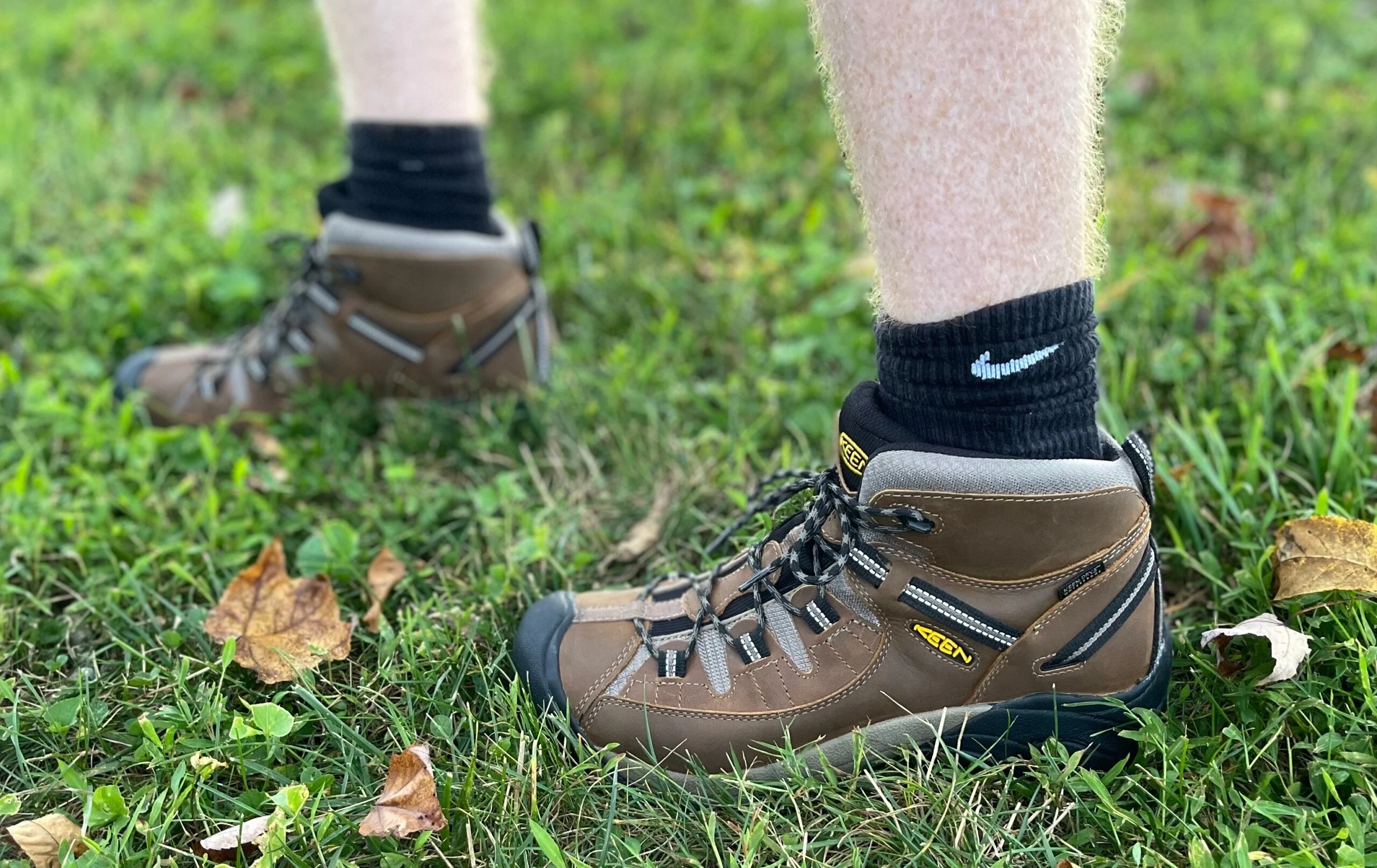
The Keen Targhee II offers excellent traction with its 4mm lug depth and non-marking rubber outsole, providing superior grip on all surfaces. The shoe’s ESS shank and S3 heel support structure gave us stability and support on challenging grounds, while the dual-density compression-molded EVA midsole offered cushioning and shock absorption.
The shoe’s Cleansport NXT technology provides natural odor control, keeping your feet fresh and clean during long hikes. The overall design of the shoe promotes a natural stride and foot positioning, making it a great choice for hikers who want a shoe that can handle various terrains and conditions.
Best for Travel: Danner Trail 2650
Specs
Weight: 794 grams (for men’s size 9)
Materials: Suede, textile, Vibram 460, and EVA
Waterproofing: Danner Dry waterproof and breathable membrane
Pros
Vibram 460 outsole with Megagrip technology provides excellent traction on various terrains
Stylish design
Suitable for both city walks and hiking expeditions
Cons
Some testers found the lacing system to be a bit more challenging to adjust
Danner has been a mainstay in outdoor footwear since the 1930s. Originally known for heavy-duty leather boots, they’ve more recently been making a splash with stylish and functional hiking shoes. The Danner Trail 2650 has quickly grown in popularity—and for good reason.
These shoes offer a great combination of function and style. A Vibram MegaGrip outsole ensures secure footing on various terrains, while the breathable mesh lining kept our feet cool during hot summer hikes. With style and functionality in mind, these shoes are as suitable for city walks as they are for backcountry expeditions. Our male tester liked that they look almost like sneakers, and that he can wear them for a lot more than just hiking.
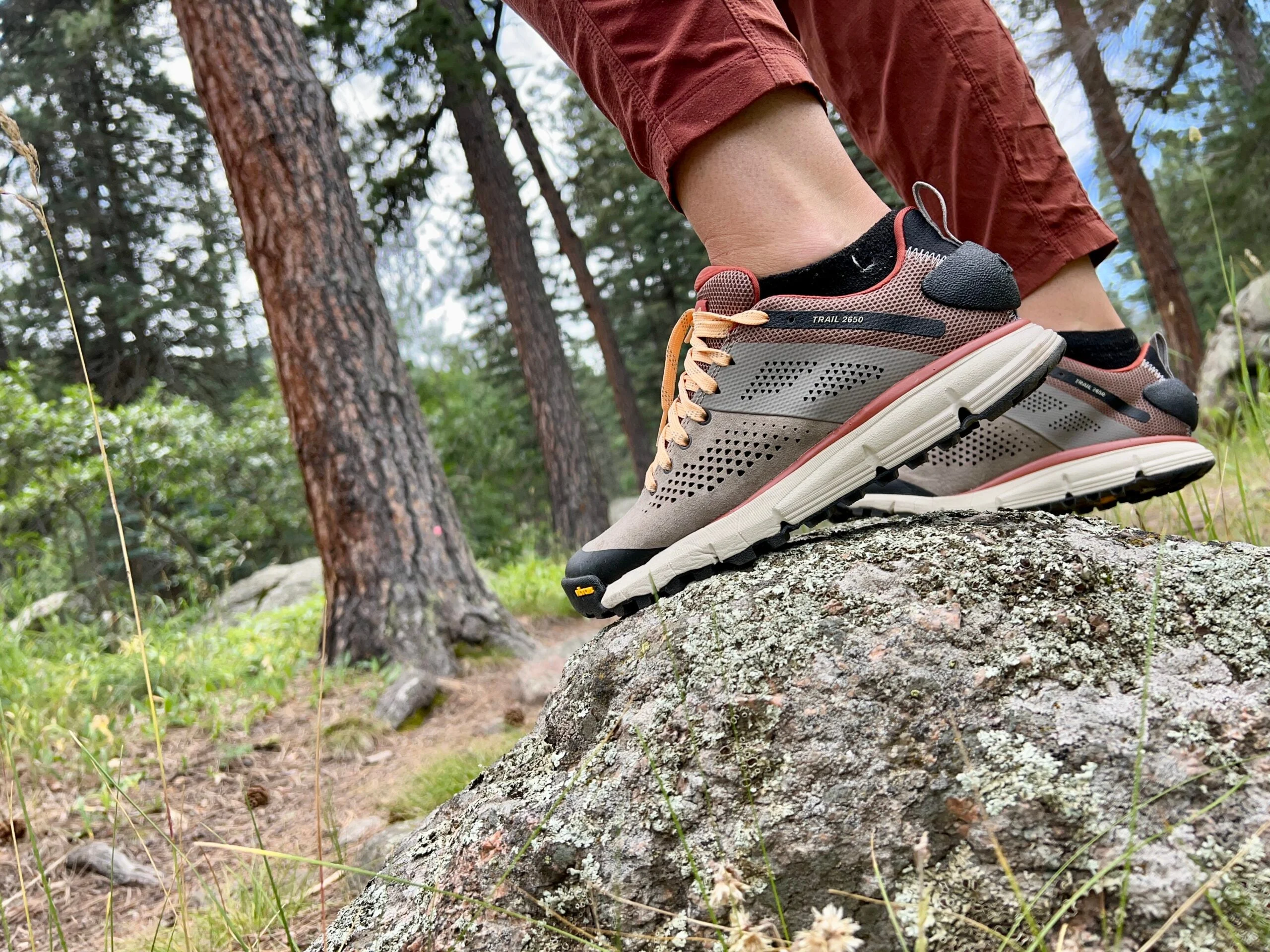
Our feet stayed comfortable and cool during a variety of summer conditions thanks to the the open-cell PU footbed and mesh lining. Plus, the OrthoLite footbed provided cushioning and support for added comfort. The suede and textile upper material, along with the toe cap and heel counter, protected our toe from rocks and other obstacles on the trail. The Trailguard TPU shank and EXO Heel System also offered stability and support on challenging grounds.

These shoes are tough enough to handle any trail, but look good enough you could easily where them all day while traveling. Whether your next trip entails days on the trail or the city, the Danner Trail 2650 is our top pick for travel.
Best Ankle Support: Hoka Kaha 2 GTX
Specs
Weight: 485 grams (for men’s size 9)
Materials: Waterproof full-grain leather, textile, Vibram Megagrip, and EVA
Waterproofing: eVent waterproof and breathable membrane
Pros
Ultra-thick cushioning aids comfort
High-top supports ankle
Impressively lightweight for a high top shoe
Cons
Ultra-thick cushioning and Hoka’s signature rounded sole may not suit some hikers
We’ve focused mostly on low-top designs for this list, but we know some of you prefer a bit more ankle support. That’s where the Hoka Kaha comes in. From the outside, this shoe looks incredibly burly and, well, heavy. We were shocked upon first testing to feel how light these actually are. At 485 grams they are rivaling some of our favorites, and significantly lighter than low-top options like the aforementioned Danner Trail 2650 or Merrell Moab 3.

If you like the ankle support of a full boot, but don’t want the weight or clunky-feel you are going to love these Hoka hiking shoes. The waterproof full-grain leather and textile upper material—along with the rubberized toe cap and heel counter—provide excellent protection against rocks and other obstacles on the trail. And we found they had excellent traction with the Vibram Megagrip outsole that has 5mm lugs. It ensured secure footing on various terrains while we were hiking.
The Meta-Rocker geometry and Active Foot Frame provide stability and support on challenging grounds, while the EVA midsole with Rangi foam cushioning offers comfort and shock absorption.
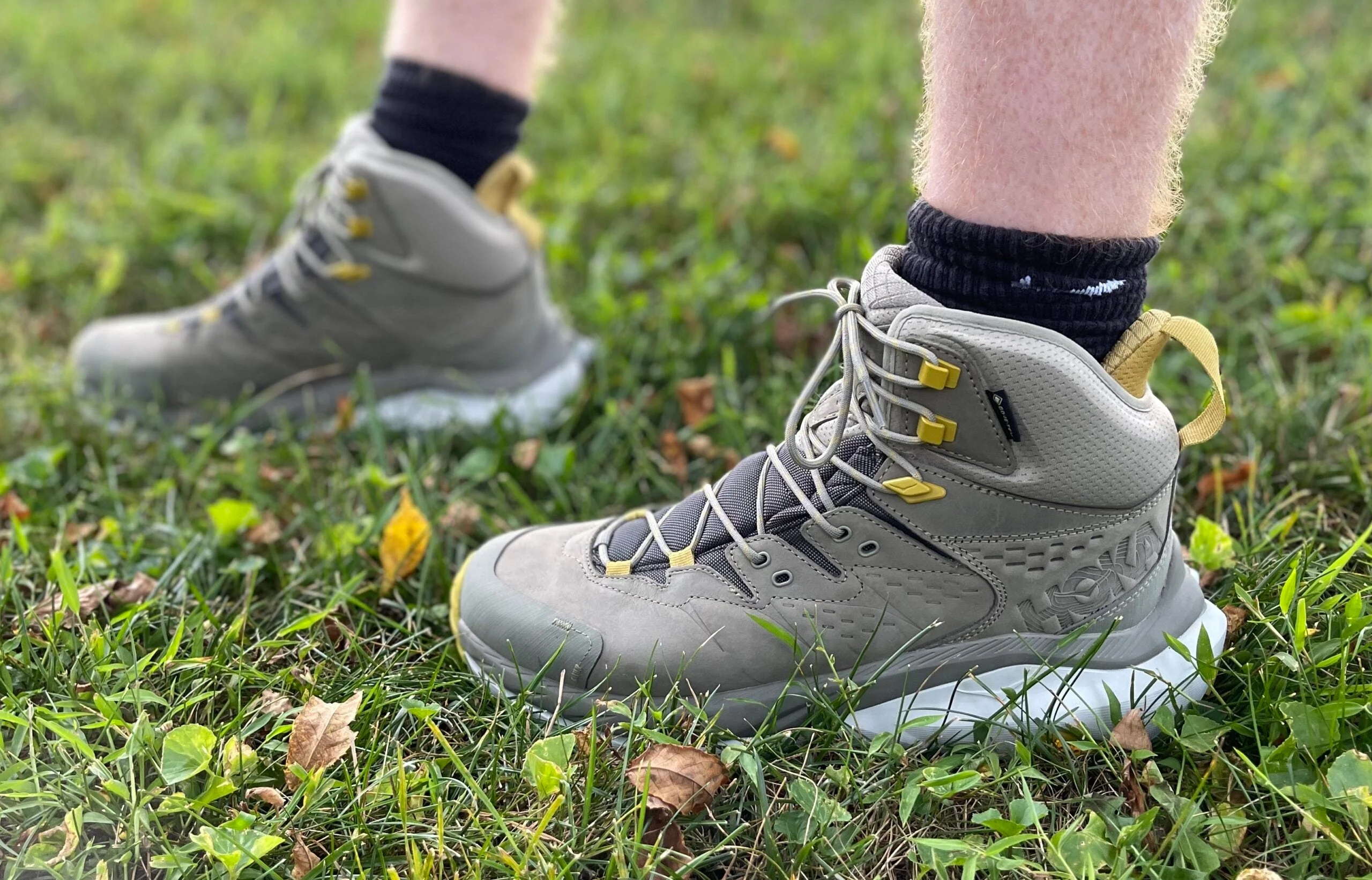
The shoe’s eVent waterproof and breathable membrane provides waterproofing and breathability, making it suitable for hiking in wet and muddy conditions. Overall, the Hoka Kaha is an excellent hiking shoe that offers exceptional performance, comfort, and protection. It is a great choice for hikers who want a high-quality shoe that can handle various terrains and conditions.
Best Budget: Merrell Moab 3
Specs
Weight: 771 grams (for men’s size 9)
Materials: Performance suede leather, mesh, Vibram TC5+, and EVA foam
Waterproofing: M Select DRY waterproof membrane (only available in some models)
Pros
Wide toe box
Durable leather upper
Cons
Heavier than other hiking shoes
The Merrell Moab 3 is a highly popular hiking shoe that comes in with an attractive price tag. Year after year it does great in testing, and we love seeing a value shoe that scores high in performance and durability.
The shoe’s upper is made of a combination of suede leather and mesh that’s both breathable and supportive. We like how much protection the toe cap and heel counter offered against rocks and other obstacles while we were on the trail. Plus, the traditional lace-up closure ensured a secure and comfortable fit.
These Merrell hiking shoes have impressive traction—we never slipped once thanks to the Vibram outsole with 5mm lugs. The EVA midsole and Merrell air cushioning provided cushioning and shock absorption, while the M Select DRY membrane kept our feet dry.
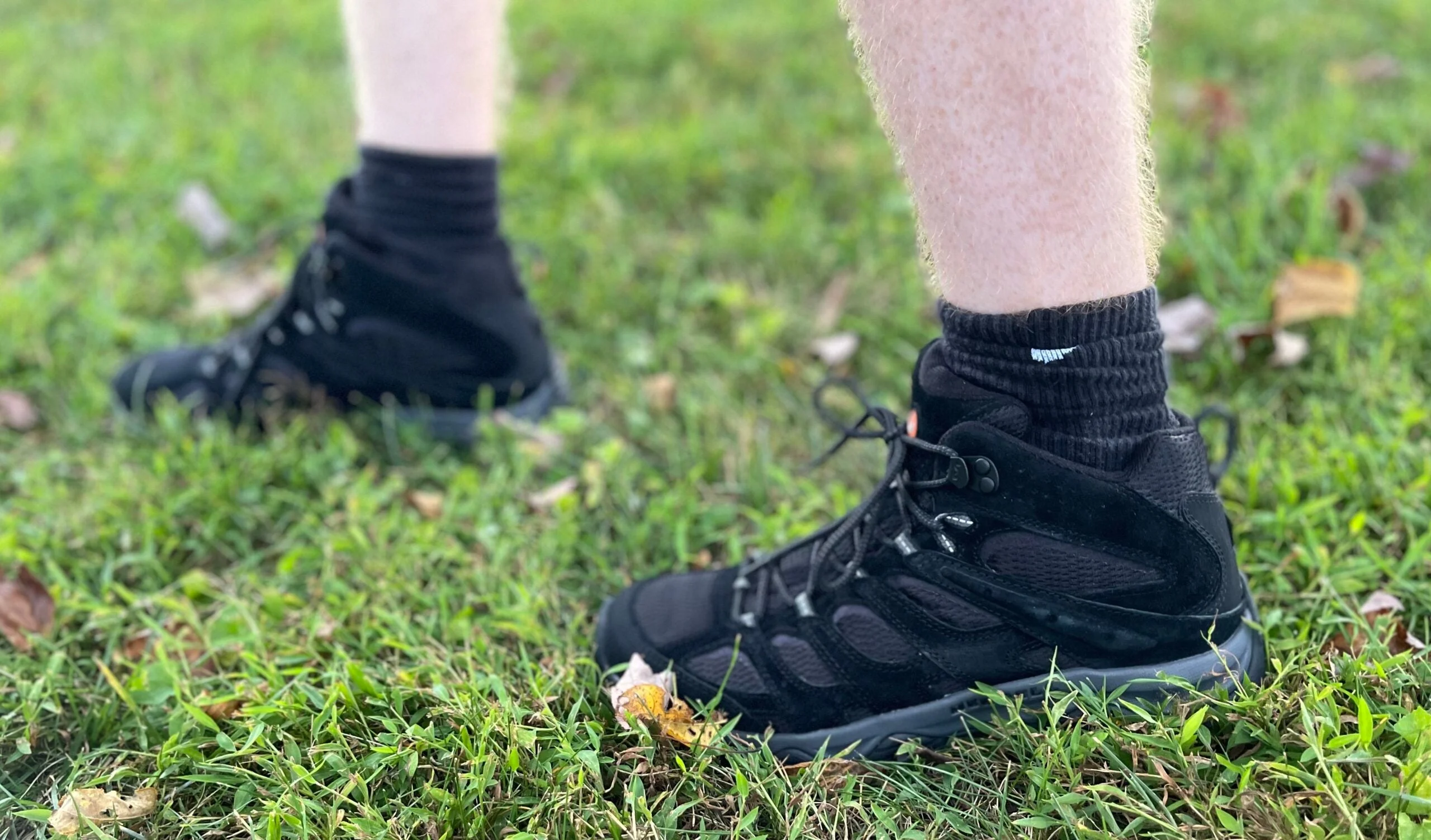
That said, it’s not the lightest hiking shoe available. It feels a bit clunkier than some of the other shoes we’ve tested. If you’re looking for a light and fast shoe, this isn’t it. But if you’re looking for a quality shoe that is more on the traditional “hiking boot” end of the spectrum, the Merrell Moab 3 is a solid option.
What to Consider When Choosing Lightweight Hiking Shoes
Comfort and Support
Your hiking shoes should provide ample comfort and support to prevent discomfort and injuries on the trail. Look for shoes with good arch support and a cushioned insole to take some pressure off your feet during long hikes. Ankle support is also crucial, especially when walking on uneven terrain, so consider a shoe with padding around the ankle.
Durability and Material
The material of your hiking shoes will affect their durability and performance. Full-grain leather, nubuck leather, and synthetics are common options. Full-grain leather provides excellent durability and water resistance, while nubuck leather is more flexible and somewhat lighter. Synthetic materials, such as polyester and nylon, are lightweight and generally more affordable but may wear out quicker.
Look for shoes with features like rock plates, which provide added protection against sharp rocks and stones. Also, choose shoes made with durable materials that can withstand frequent use.
Traction and Stability
A quality pair of lightweight hiking shoes should offer excellent traction and stability on various surfaces. A well-designed outsole made from durable rubber will provide grip on rocks, mud, and wet surfaces. Additionally, look for a shoe with a stable midsole that offers support and helps prevent your foot from rolling excessively, which can lead to ankle injuries.
A flexible sole allows your foot to move more naturally with each step. When trying on shoes, bend and twist them to see how well they flex. This is especially important for trail running and more technical hikes.
Breathability and Waterproofing
Finding the right balance between breathability and waterproofing is essential for a comfortable hike. Shoes with a waterproof membrane, such as GORE-TEX, can keep your feet dry in wet conditions while still allowing some moisture and heat to escape. But a waterproof shoe will always be slightly hotter than one without a waterproof lining or treatment. If you plan to hike in mostly dry conditions, skip the Gore Tex and look for mesh and breathable side panels.
Shoe Components
When selecting lightweight hiking shoes, it’s essential to understand the different components that make up a shoe.
Outsoles: The outsole is the bottom part of the shoe that comes into contact with the ground. For hiking shoes, you’ll want to look for outsoles made of durable rubber with lugs (traction bumps) for increased grip on uneven terrain. The lug pattern should be designed for the type of trails you’ll be encountering. You can generally choose between deep and aggressive lugs for muddy or off-trail conditions, and shallower lugs for well-maintained paths.
Midsoles: Midsoles are the cushioning layer between the outsole and the upper part of the shoe, providing support and shock absorption. Two common midsole materials are EVA (ethylene-vinyl acetate) and PU (polyurethane). EVA is lightweight, flexible and provides decent cushioning. Shoes with EVA midsoles are generally less expensive and work well for short to moderate hikes. PU is denser and more durable, making it suitable for longer hikes and backpacking trips. PU midsoles are typically found in more rugged hiking shoes.
Uppers: The upper is the top part of the shoe that wraps around your foot. In lightweight hiking shoes, uppers are typically made of breathable materials like mesh, synthetic fabrics, or a combination of both.
Insoles: Also known as footbeds, insoles provide additional cushioning and support. Many hiking shoes come with removable insoles, allowing you to customize the fit and level of cushioning. Consider the arch support and heel cup when selecting insoles, as these features can affect overall comfort.
Shanks and Plates: Shanks and plates are internal support structures found in hiking shoes. Shanks are stiff materials, usually made of nylon or plastic, placed between the midsole and outsole. They provide support and structure to the shoe, ensuring torsional rigidity on unstable terrain. Plates are located in the forefoot between the midsole and outsole, acting as a barrier against rocks and roots. They protect your feet from bruising and enhance the overall stability of the shoe.
Fit and Size
A proper fit is essential to ensure a comfortable and productive hike. Most lightweight hiking shoes have a shorter break-in period than heavier hiking boots, but it’s still important to give your new shoes time to adjust to your feet. Take short walks or hikes with your new shoes before heading on a longer hike, and monitor for any discomfort or potential blister spots.
When it comes to finding the perfect pair of hiking shoes, everybody’s feet are different. Many brands offer wide or narrow versions of their hiking shoes, catering to different foot shapes. Look for a shoe with a wider toe box if you have wide feet, as this will give your toes ample space to move and prevent pinching or cramping. On the other hand, if your feet are narrow, opt for hiking shoes designed for a more snug and secure fit.
Cushioning and Stack Height
Different levels of cushioning can affect your hiking experience. Maximum cushioning is ideal for those who need extra padding and support, while zero-drop shoes are designed to mimic the feel of being barefoot—they have an even stack height from heel to toe.
FAQs
Q: What features are crucial for lightweight hiking shoes?
When choosing lightweight hiking shoes, focus on features like breathability, flexibility, and durability. Opt for materials like nylon and split-grain leather, which are lighter and more breathable than full-grain leather. A good grip and traction are essential, so make sure the outsole is made of high-quality rubber. Cushioning and support are also important, so look for a comfortable insole and a supportive midsole.
Q: How to determine the right fit for hiking shoes?
To find the right fit, start by measuring your feet and comparing them to the brand’s sizing chart. Always consider the type of socks you’ll be wearing while hiking. Try the shoes on with the specific socks you’ll use to ensure a comfortable fit. Since your feet tend to swell throughout the day, it’s best to try on shoes in the afternoon or evening. Don’t forget to leave some wiggle room for your toes and ensure that your heel does not slip while walking.
Q: What are the top lightweight hiking shoe brands?
Some popular brands for lightweight hiking shoes include Merrell, Salomon, Hoka One One, and Danner. Each brand offers various models and features, so make sure to research and compare their products to find the perfect pair for your needs and preferences.
Q: How do men’s and women’s hiking shoes differ?
Men’s and women’s hiking shoes typically differ in size, fit, and design. Women’s shoes are generally narrower in the heel and wider in the forefoot compared to men’s shoes. The design elements, such as color schemes and patterns, may also vary between men’s and women’s shoes. When choosing hiking shoes, prioritize comfort and functionality over the gender-specific label.
Q: How to maintain hiking shoes for a long lifespan?
To prolong the lifespan of your hiking shoes, ensure proper care and maintenance. After each hike, clean off dirt and debris with a brush or damp cloth. If the shoes are wet, let them air-dry away from direct heat. Regularly check the shoe’s condition and make necessary repairs, such as replacing worn-out laces or insoles. Store your hiking shoes in a cool, dry place to prevent damage from moisture and humidity.
Q: Which hiking terrains require lightweight shoes?
Lightweight hiking shoes are ideal for moderate terrains, such as well-maintained trails, grass, and dirt tracks. They are also increasingly popular for longer backpacking trips and thru-hiking expeditions. Benefits of a lighter shoe include less fatigue from a heavyweight shoe and often a quicker break in period.
Best Lightweight Hiking Shoes: Final Thoughts
Choosing the best lightweight hiking shoes can make all the difference when you’re out on the trail. You want your hiking shoes to be comfortable, especially if you’re going to be wearing them for long distances. It’s essential to try them on with the socks you plan to wear while hiking, and walk around in them to ensure they fit well. Your feet should have room to move, but not so much that they slip around, which can lead to blisters.
Why Trust Us
For more than 125 years, Field & Stream has been providing readers with honest and authentic coverage of outdoor gear. Our writers and editors eat, sleep, and breathe the outdoors, and that passion comes through in our product reviews. You can count on F&S to keep you up to date on the best new gear. And when we write about a product—whether it’s a bass lure or a backpack—we cover the good and the bad, so you know exactly what to expect before you decide to make a purchase.


